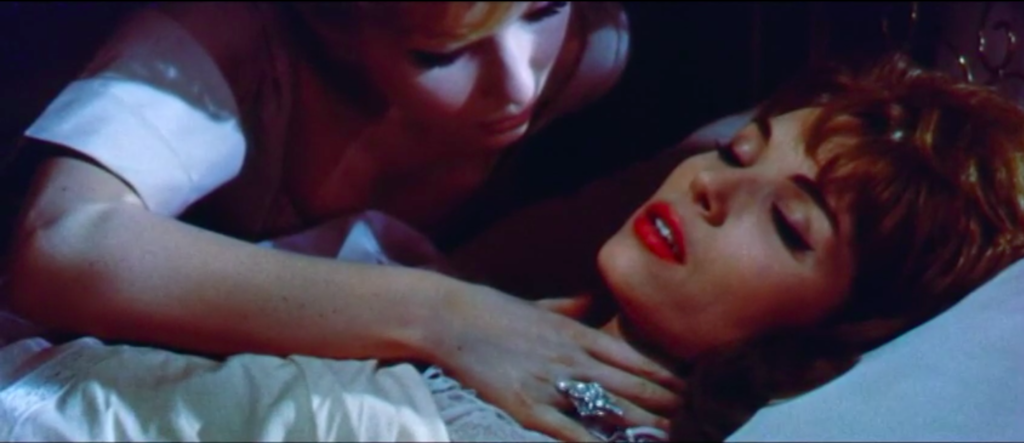
Roger Vadim’s adaptation of Sheridan Le Fanu’s novella Carmilla, …Et mourir de plaisir (1960), opened to poor reviews focused on Vadim’s choice to relocate the setting of Carmilla to a contemporary European estate. This decision was motivated not only by economics, but also to distinguish …Et mourir de plaisir from the period centered Gothic horror films being produced by the likes of Hammer Studios at the time. What contemporary criticism seemed to miss at the time was that by relocating the temporal setting of the novella Vadim, intentionally or not, was opening a discourse between vampire lore and the trauma of WWII in much the same way as Nosferatu (1922) engaged in the aftermath of WWI.
…Et mourir de plaisir with its regal manor and church ruins evokes the photographs of countrysides decimated by bombs. There’s an inherent dichotomy here wherein the surviving mansions contrast with ruins that share the same immediate landscape. History and the deaths that mark history exist all around the characters in …Et mourir de plaisir. Like Carmilla (Annette Stroyberg), the images of the film itself are torn between the Europe that once was and the Europe that has continued to be.
But the use of location and these references to European history and the photographs that have recorded it are merely cues and subtextual suggestions within the broader scope of …Et mourir de plaisir. In the pictures that comprise the film one sees cinematographer Claude Renoir compose his shots with the widescreen flare of a major Hollywood epic while at the same time utilizing the technicolor process to evoke the sensuous reds of a Hammer Horror film. Renoir composes …Et mourir de plaisir as an artful exploitation film that emphasizes the natural beauty of the location photography; a location that is intrinsic to Le Fanu’s tale of eroticized terror.
Vadim, in his modernist rendering of Carmilla, applies a Freudian perspective to the plot and its characters and essentially casts the main character’s blossoming lesbianism as a byproduct of being spurned by Leopoldo (Mel Ferrer). It’s a simplification of vampiric myths that may not sit well with some but does work as an effective means of deconstructing vampire lore as fetish. The vampire in film is an erotic signifier that, given the context of plot, can either represent an ideal sexual fantasy or the anxiety surrounding a latent sexual desire.
…Et mourir de plaisir subtly suggests that the outsider status of queer individuals is synonymous with the vampire that exists only as the result of circumstances that defy or undermine the traditional marriage plot in fiction. Unlike most Gothic vampire films of its day …Et mourir de plaisir does not actively vilify the vampire character nor by conceptual extension the queer character. In fact, the vilification of the vampire/queer character by the townsfolk in the film is treated as both ignorance and misguided paranoia. Carmilla and later Georgia (Elsa Martinelli) may be seen through Vadim’s Freudian gaze as queer by necessity of Leopoldo absence but the film, in spite of Vadim, endows these queer women with more agency than any other character.
…Et mourir de plaisir is a gorgeous film, especially Vadim’s Cocteau inspired dream sequence. The affecting quality of the atmosphere in the film coupled with the erotic tension between Martinelli and Stroyberg are enough to sell …Et mourir de plaisir as an essential entry in the European horror canon. The influence of …Et mourir de plaisir can be seen in films such as The Vampire Lovers (1970), Daughters Of Darkness (1971) or any of Jean Follin’s vampire pictures. …Et mourir de plaisir is a film that any horror fan should see.
